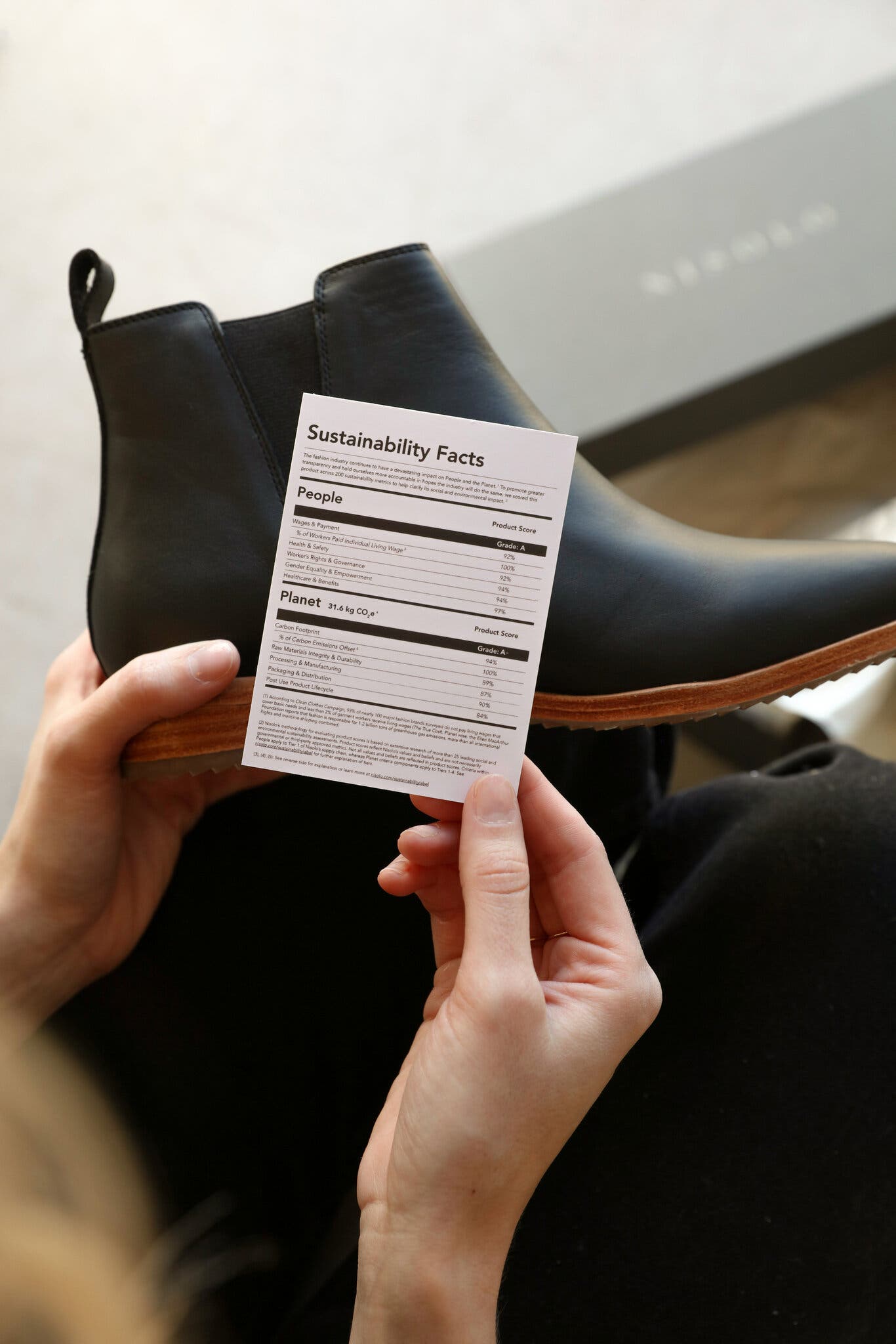
One of the biggest fashion trends of late 2021 didn’t have to do with color or skirt length or sequins but rather with sustainability. Or, to be specific, the appearance of clothing labels with data that consumers can use to trace the creation of a potential purchase.
The roots of the trend stretch back to 2019 at least, when Sheep Inc., a knitwear label in London, introduced an NFC tag — or near-field communication (the same tech that enables contactless payment) attached to its sweater hems — that allows customers to track the supply chain of its Merino wool sweaters via an app.
At the Group of 20 meeting in October 2021, Prince Charles’s Sustainable Markets Initiative Fashion Taskforce presented its “Digital ID,” which can trace a fashion item from production through sale and even resale. It will be used by the Taskforce’s 15 brands and retailers including Armani, Mulberry and Chloé this year before becoming more widely available. And the British start-up Provenance developed software to trace the supply chain of pieces from field to finished garment. Provenance’s technology was first used last fall by Ganni, a Danish brand.
It was in December, however, that Nisolo, a sustainable shoe brand in Nashville, introduced what may be the most familiar-looking label of all: a “Sustainability Facts” label inspired by the nutrition facts box on many food products. Here’s a primer on how it all works.
What’s the difference between these labels and the clothing labels I’m used to seeing on my shirts and sweaters?
For years, clothing labels have offered straightforward information like the country where the item was made, and its material composition by percentage. But if it’s a cotton T-shirt, that labeling doesn’t explain anything about, say, where and how the cotton was grown or if the people who picked it were paid a living wage. Or if it’s a wool sweater, where the wool comes from and if the sheep were treated humanely. The new labeling offers many more details.
How does it work?
Each labeling system is different. With Sheep Inc., you hold your smartphone over a nickel-size, plastic-looking tab made of a biodegradable castor bean derivative. An app page then opens, where you can see “which flock the sheep is in, the date wool was shorn, when the sheep last had vaccinations, or gave birth, the journey the wool took from New Zealand to the mill, to the knitters, fulfillment center, and to the customer,” said Alexander Lewis, the chief designer of Sheep Inc.
For the Digital ID, which the Fashion Taskforce developed with EON, a digital identification company, you scan a QR code on the label or an NFC embedded in the item. That also takes you to an app page, this one detailing the materials involved and the product’s authenticity — a useful tool for the secondhand market, where the sale of counterfeit goods remains a significant problem, and for recycling, since components like dyes and buttons are identified.
In the Provenance system, the information is accessed by clicking through a brand’s online shopping platform. “Say the shirt is made of organic cotton — you can click on ‘cotton,’ and see water usage, carbon reduction, worker impact,” said Jessi Baker, founder of Provenance. “You can see where the factory is on a map.” There are plans to embed the same information in QR codes on swing tags and labels.
Read the full article on The New York Times
